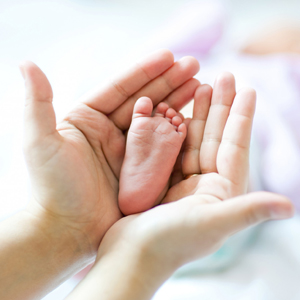Viability Scan
A viable foetus, capable of independent survival, typically emerges around 28 weeks of gestation. However, the definition and threshold for viability can differ among countries due to varying factors and gestational age considerations.
What is a Viability Scan?
The viability scan, also known as the dating scan, plays a crucial role in assessing the health and progress of pregnancy during the first two months. Around 28 weeks of gestation, the foetus begins to develop viability. Conducted between seven and eleven weeks into pregnancy, the early pregnancy viability scan accurately determines the age of the foetus. The initial months of pregnancy can be worrisome for many women, as they may experience stomach pains and spotting, leading to concerns about the pregnancy’s normal progression. To provide reassurance and confirm the proper development of the pregnancy within the uterus, a transvaginal ultrasound check is performed.
What Does It Check?
During a fetal viability scan, your OB/GYN may request specific assessments to gather important information, including:
- Determining the gestational age of the foetus, which helps establish a timeline for the pregnancy.
- Evaluating the foetus heartbeat to determine the number of babies and ensure a regular and strong heartbeat.
- Examining the placenta for any issues, such as placenta previa, and enabling the OB/GYN to make appropriate plans if necessary.
- Detecting any abnormalities, such as an ectopic pregnancy, where the fertilized egg implants outside the uterus or in the fallopian tube.
What is the procedure of Viability Scan?
The results of a viability scan reveal a lot about your pregnancy. It verifies the number of embryos, detects the heartbeat of the foetus, and offers dimensional information about the embryo. It is strongly recommended and encouraged for individuals over the age of 35 to undergo this procedure.
An ultrasound is used during the viability scan process via the transvaginal route. Transabdominal ultrasonography is another method that may be used to scan your abdomen without you being present. Both procedures can be done as an outpatient. A transabdominal scan shouldn’t need more than a few minutes to complete the entire process. For a transvaginal scan, you might need to allot a little more time.
Reasons for a viability scan
The first few months of pregnancy can be accompanied by worry, anxiety, discomfort, and even vaginal bleeding. To alleviate concerns and ensure proper progress, a viability scan is recommended. This scan provides reassurance and confirms that everything is on track and progressing as expected, offering peace of mind during this early stage of pregnancy.
To put it briefly, you can obtain a viability scan to make sure there aren’t any major problems. The following is determined or confirmed by this procedure:
- The infant is well and healthy.
- You are not pregnant ectopically (in the fallopian tubes).
- Determines the number of embryos (including single, twin, triplet, and other variations).
- Calculates the start of your pregnancy and your expected delivery date.
- Check your infant for any potential anomalies.
- The heartbeat of your infant is monitored and recorded to make sure it is beating normally.
- Detects internal bleeding.
Is it required to perform this scan?
The viability scan is a necessary procedure for monitoring the progress of your pregnancy. It allows your OB/GYN to assess the well-being of the pregnancy and provide appropriate guidance for further steps. Additionally, the estimated due date provided in the scan results helps in better planning.
Why Choose Giggles Hospitals?
At Giggles Hospitals, we prioritize your comfort and ensure that every test conducted is essential. Our physicians recommend only necessary tests and treatments, understanding that excessive testing can cause unnecessary anxiety. Given the importance of the viability scan, it is crucial to follow your doctor’s recommendations to ensure the best care and support throughout your pregnancy journey.




